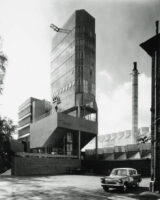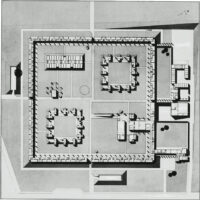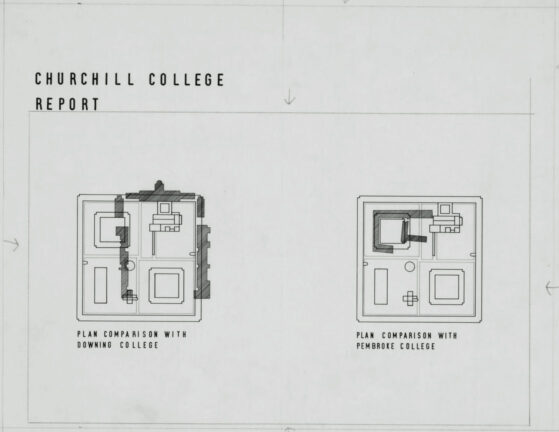Do I prefer Ringo?
Obituary of James Gowan, published on: website The Architect, 2015
 The Brittish architect James Gowan has passed away. With James Stirling, he designed a series of powerful brick residential buildings in the 1950s, culminating in the famous Leicester Engineering Building. The conflict between the two partners about the authorship of this building stands as one of the most famous clashes in twentieth-century architectural history. As an architecture teacher and the author of a body of
The Brittish architect James Gowan has passed away. With James Stirling, he designed a series of powerful brick residential buildings in the 1950s, culminating in the famous Leicester Engineering Building. The conflict between the two partners about the authorship of this building stands as one of the most famous clashes in twentieth-century architectural history. As an architecture teacher and the author of a body of
finely crafted work consisting mainly of housing, James Gowan is rightly placed on a pedestal in London architectural circles.

Ellis Woodman has demonstrated in his biography, reviewed by me in November 2008’s edition of De Architect, how James Gowan’s 1959 draft of the Engineering Building in Leicester, created by James Stirling, provided the so-called ‘Style for the Job’. In this case, this consisted of a detailing of patent rods and wire-cut engineering bricks. After the subsequent success of this building, Stirling declared this style of materials to apply to all newly acquired commissions. With each building, however, Gowan always wanted to find an appropriate idiom. In his judgment, a library could not look like a factory. This conflict over the distinction between the typology of a building and its stylistic and architectural treatment did not overcome the gentlemen. Stirling’s career, which incidentally continued to benefit from his partners’ input in ever-changing collaborations, sky-rocketed. Gowan plunged into a much more modest architectural practice and was active in teaching.

Gowan’s oeuvre is at least as varied as Stirling’s. With its radical typology, the 1958 design for Churchill College in Cambridge anticipates the work of the Italian Tendenza architects a decade later. By his own admission, the design was prompted by historical references, but was undoubtedly also influenced by the typology of the local colleges. Schreiber House I in Hampstead, built in 1964, is based on a classical geometric scheme too, with concrete rib floors and wooden furniture giving each room a different character. Later, Gowan worked in a free-style classicist idiom when it suited. Frivolous his buildings would never become.
Together with Ellis Woodman, I visited Gowan once at his home in Notting Hill. Gowan’s archive appeared to be in pristine order. Unsolicited, he expressed the pain he still felt about the conflict with Stirling, even though the resulting break-up was half a century old by then. What struck me most about this meeting was how precisely Gowan explained the detailing of various residential buildings. He drew a lot himself. Sometimes he directed only the crucial components of a building. Gowan showed me how he kept control over the construction process of Schreiber House II in remote Chester thanks to sketched schedules of the natural stone elements.

What he drew depended on the Style of the Job, which in turn depended on the joy the architect and his clients had in the making of architecture. Gowan visibly relished the subtle panelling and furniture pieces found in his homes. His craftsmanship was not that of the artisans on the building site. His métier was the understanding of possibilities and limitations of the craft, factory and building site. He claimed that for a perfect building, you don’t need perfect drawings at all.
I had to laugh heartily when FAT architect Charles Holland once said to me: ‘Writing a book about Gowan is like saying: I actually prefer Ringo’. His joke about Woodman’s biography and the controversy between the two former design partners approximates the legendary Scottish humour of Gowan himself.

Do I prefer Ringo? I have no answer to that question. James Stirling is an architect counted among the most important of the last century – including myself. But that does not make the question a pointless one. The choices Gowan made outside the spotlight are worth considering.
The uniqueness of James Gowan’s work is that he knew how to flawlessly link his intellectuality to the mundanity of building and dwelling. And precisely that is what earned Gowan his place in history. His buildings fit into a long architectural tradition. They keep this alive, but they also manage to be comfortable. His Style of the Job is never overdone. Gowan fitted the potentially spartan Schreiber House I with magnified black leather Chesterfield sofas, heavy curtains and rugs. The house is among the highlights of late modern architecture.
James Gowan lived to be 92 years old.
